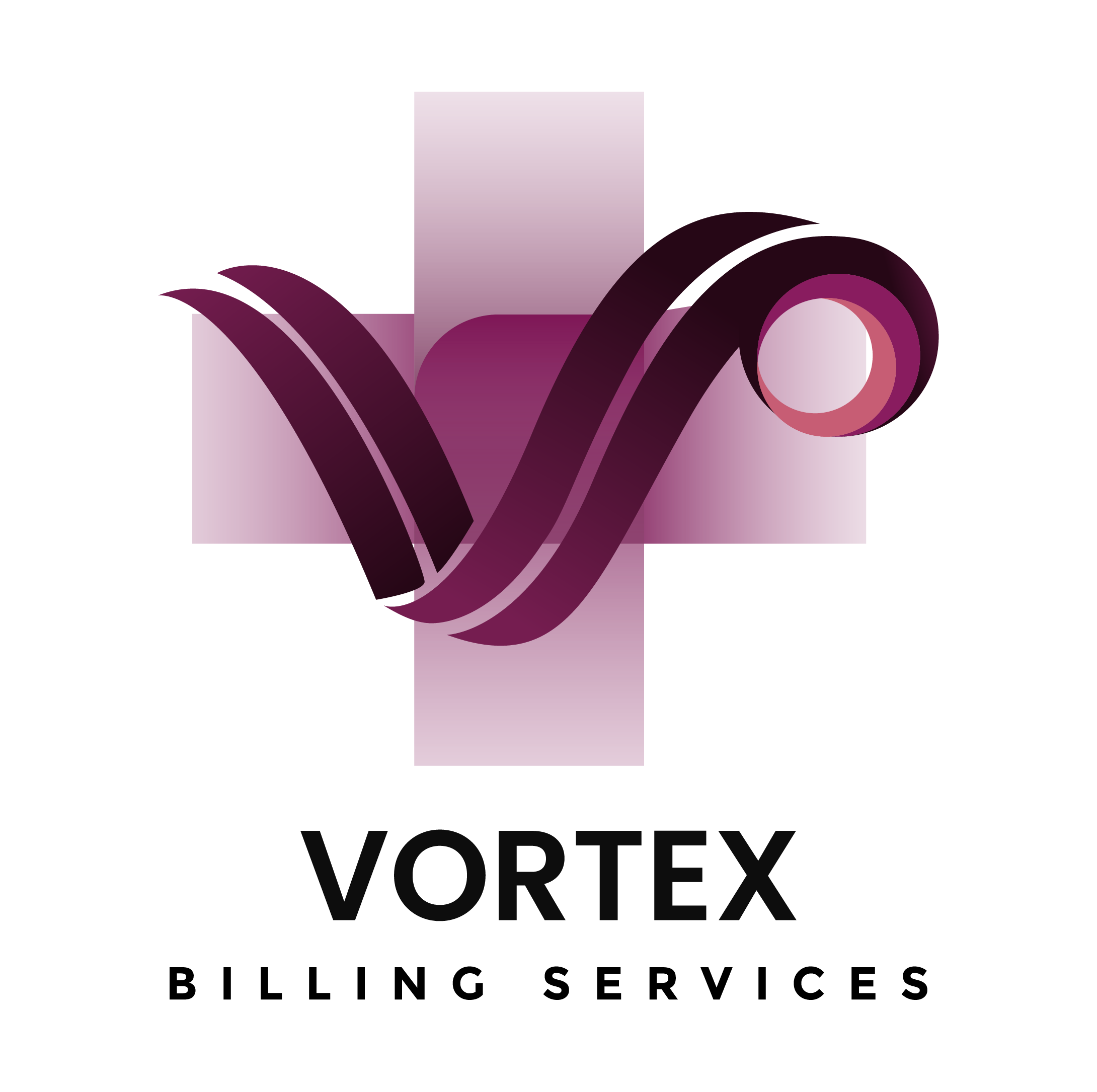The Backbone of Healthcare Finance: Optimizing Your RCM Medical Billing Process
In the complex world of healthcare finance, RCM medical billing is the backbone of financial health for every practice and clinic across the USA. Wondering how to improve every phase of your billing process from the moment a patient schedules an appointment to the final payment collection? You’re in the right place. This guide dives deep into the entire revenue cycle management (RCM) process and gives you step-by-step strategies to optimize each stage. Whether you run a small clinic or a growing healthcare system, understanding and streamlining RCM medical billing can unlock hidden revenue, reduce costly errors, and improve compliance.
Introduction to RCM Medical Billing
What is RCM Medical Billing?
Revenue Cycle Management (RCM) medical billing is more than just submitting claims and waiting for payments. It’s a comprehensive process that integrates administrative and clinical functions to capture, manage, and collect patient service revenue. From verifying insurance eligibility to processing claims, handling denials, and collecting payments, every action is part of the RCM ecosystem.
In the U.S. healthcare landscape, this process ensures that providers are paid accurately and promptly. A well-oiled RCM machine reduces claim rejections, speeds up reimbursement, and provides clear financial oversight. Practices that neglect RCM often find themselves grappling with backlogs, errors, and mounting administrative costs.
RCM medical billing plays a central role in the sustainability and growth of any medical practice. When optimized correctly, it acts like a high-functioning assembly line—efficient, fast, and error-free. Conversely, a broken RCM system is like a leaky bucket, draining your practice’s potential profits and reputation.
Why RCM Is Crucial for U.S. Healthcare Providers
The U.S. healthcare system is known for its complexity—insurance companies, compliance mandates, coding standards, and patient expectations all collide in a highly regulated environment. This is where RCM medical billing steps in as a crucial business function.
Without a strong RCM strategy, practices risk delayed payments, increased denials, higher operational costs, and poor patient satisfaction. For new and expanding practices especially, building an efficient RCM infrastructure from day one can be a game-changer.
An optimized RCM process supports:
- Accurate and timely reimbursements
- Streamlined workflows
- Improved patient engagement
- Greater compliance with regulations
- Better financial planning and forecasting
Understanding the Revenue Cycle Stages
Step-by-Step Breakdown of the Revenue Cycle
The RCM medical billing process isn’t a one-size-fits-all formula—it’s a series of interlinked stages. Each stage plays a key role in ensuring that providers receive full and timely payment for the services rendered.
Let’s break it down:
- Pre-Registration: Collecting preliminary patient info and insurance.
- Eligibility Verification: Confirming active coverage and copays.
- Patient Check-In/Check-Out: Logging services and updating records.
- Charge Capture: Recording charges for procedures rendered.
- Medical Coding: Assigning CPT/ICD codes based on diagnosis and treatment.
- Claim Submission: Sending claims to insurance payers.
- Payment Posting: Logging remittances and applying to patient accounts.
- Patient Billing: Sending bills to patients for their balance due.
- Denial Management: Reviewing and reworking rejected claims.
- Reporting and Analytics: Monitoring KPIs and financial performance.
Understanding each of these steps is the first step toward optimization. By knowing where things can go wrong, you gain the power to prevent delays and revenue leakage.
Aligning Clinical and Administrative Workflows
One of the biggest mistakes practices make is isolating clinical care from administrative processes. But in reality, the two are deeply intertwined. The more aligned your medical and billing teams are, the smoother your revenue cycle will be.
Here’s how to achieve that alignment:
- Cross-train staff: Teach front-desk employees the basics of billing.
- Use integrated EHR and billing software: Avoid duplicate data entry.
- Hold regular meetings: Let billing teams share common issues with clinicians.
- Use checklists: Ensure documentation and coding completeness.
With strong alignment, your clinical staff knows what documentation is needed for billing, and your billing team understands the nuances of clinical care that impact reimbursement. This harmony leads to cleaner claims, fewer denials, and better revenue outcomes.
Patient Pre-Registration and Insurance Verification
Front-End Efficiency Begins Here
The revenue cycle starts long before the patient even steps into your clinic. In fact, poor pre-registration is one of the most common root causes of claim rejections. Accurate and efficient patient pre-registration is the foundation of successful RCM medical billing.
This phase involves collecting:
- Full patient demographics
- Insurance information
- Referrals or prior authorizations
- Consent and financial responsibility forms
The goal? Clean data entry. Even one digit wrong in an insurance ID can result in a denied claim.
Pre-registration is also the best time to establish patient expectations. Practices should clearly communicate what services are covered, what the patient owes, and when payment is due. This transparency helps avoid payment disputes later.
Tools and Technologies That Simplify Pre-Registration
Gone are the days of paper clipboards and manual entries. Modern RCM medical billing systems come with built-in tools to simplify pre-registration and verification.
Some of the best tools include:
- Online intake forms
- Eligibility verification APIs
- Patient portals
- Real-time insurance checks
- Automated reminders and alerts
These tools not only save time but also reduce manual errors, improve patient satisfaction, and lead to faster claims processing. For tech-oriented practices, adopting digital solutions early can yield long-term efficiency and profitability.
Charge Capture and Medical Coding Accuracy
Why Accuracy in Coding is Critical
Every dollar in healthcare reimbursement depends on accurate and compliant coding. Incorrect codes can lead to claim denials, audits, and even legal issues. In RCM medical billing, the charge capture and coding stage bridges clinical documentation and billing systems.
Providers need to document the full scope of services, and coders must translate that into precise CPT, HCPCS, and ICD-10 codes. Any gaps, omissions, or upcoding can jeopardize the claim.
Here’s what strong coding practices involve:
- Detailed provider documentation
- Regular coder training and certification
- Double-checking high-value or high-risk codes
- Staying updated with CMS and payer rule changes
A coding error is more than a typo—it’s potentially a lost claim, delayed payment, or compliance risk.
Technology’s Role in Reducing Errors
Thankfully, technology is helping reduce human errors. Coding automation tools, AI-driven code suggestions, and claim scrubbing software all play a role in improving coding accuracy.
For example:
- AI-powered coders analyze EHR notes and suggest codes.
- Computer-assisted coding (CAC) tools validate against payer policies.
- Integrated charge capture tools automatically record services rendered.
These tools speed up the coding process while improving compliance and accuracy. They’re especially useful in fast-paced clinics with high patient volumes, where errors are more likely without digital support.
Claim Submission and Clean Claims Strategy
Best Practices for Seamless Claim Submission
When it comes to RCM medical billing, the claim submission phase is where all your previous efforts culminate. This is the moment where your coding, documentation, and data integrity are put to the test. A clean claim—meaning a claim free of errors or omissions—results in quicker payment and fewer headaches.
But what defines a clean claim? It’s a claim that:
- Meets all payer-specific requirements
- Contains accurate patient and provider info
- Is supported by complete documentation
- Has correct coding and modifier usage
- Reflects proper authorization and medical necessity
Submitting clean claims should be a priority, not an afterthought. A proactive strategy includes:
- Automated claim scrubbing tools that flag potential issues before submission
- Regular updates to billing software to align with evolving payer rules
- Real-time eligibility checks to reduce invalid policy errors
- Staff training on frequent claim errors and how to avoid them
Consistency is the secret. Submitting claims daily instead of in batches, and tracking submission success rates, can dramatically improve overall revenue cycle performance.
How to Minimize Denials and Rejections
Claim denials are not just inconvenient—they’re expensive. Reworking denied claims costs time, resources, and can delay payment by weeks. In some cases, practices never recover the revenue. The average denial rate across U.S. practices ranges from 5% to 10%, which can significantly impact your bottom line.
To combat this, a smart RCM medical billing system includes a denial prevention plan. This may include:
- A “first-pass yield” metric that tracks clean claim submission rate
- A denial log that identifies common error patterns
- Training modules focused on high-denial specialties like orthopedics or cardiology
- Pre-bill audits to flag missing information before submission
Remember, preventing denials is more cost-effective than managing them. A 1% drop in denials can translate into thousands of dollars recovered annually.
Payment Posting and Patient Billing Transparency
Accurate Payment Reconciliation
Once a claim is processed and paid by the insurance company, it enters the payment posting phase. This step often gets overlooked but is vital for maintaining accurate financial records and identifying revenue leaks. In RCM medical billing, payment posting must be timely, precise, and transparent.
This phase involves:
- Applying payments to the correct patient account
- Matching explanation of benefits (EOBs) or ERAs with the original claims
- Identifying underpayments or discrepancies
- Posting adjustments, write-offs, and patient responsibilities
If this step is done manually or inconsistently, your revenue reports will never reflect true earnings. Worse, you could be writing off legitimate reimbursements or billing patients for the wrong amounts.
Modern practices use automated ERA posting to save time and reduce errors. With seamless integration into your billing software, you can automate payment allocation, reduce manual reconciliation, and flag anomalies instantly.
How to Enhance Patient Communication and Satisfaction
Today’s patients are also consumers. They expect clear, upfront billing and easy payment options. Practices that prioritize billing transparency are more likely to be paid on time and receive positive reviews.
Improving patient billing means:
- Providing itemized bills that are easy to understand
- Offering multiple payment methods (credit card, ACH, mobile apps)
- Sending automated reminders before and after due dates
- Using friendly, non-technical language in statements and reminders
Transparency in billing not only reduces disputes but also improves trust and patient retention. When combined with flexible payment plans and prompt customer service, your RCM medical billing process becomes a tool for improving patient loyalty—not just collecting money.
Denial Management and Appeals Process
Key Reasons for Claim Denials
Claim denials are frustrating, but they’re also avoidable when you know what’s causing them. In most practices, the same few issues account for the majority of denials. These include:
- Incorrect patient or insurance information
- Missing or invalid authorization
- Non-covered services
- Inaccurate or incomplete coding
- Late submissions or filing errors
The first step in denial management is classification. By categorizing denials into trends, you can quickly diagnose the root cause. For instance, if you’re consistently seeing denials due to missing modifiers, you know it’s a coding training issue.
Effective denial management also means distinguishing between soft denials (which can be corrected and resubmitted) and hard denials (which result in a permanent loss of revenue). Your billing team should have workflows tailored for each.
Building a Proactive Appeals Process
Once a claim is denied, your appeals process kicks in. This is where speed, documentation, and follow-up become your biggest allies. Unfortunately, many clinics treat appeals as reactive rather than proactive, leading to missed revenue.
To strengthen your appeal process:
- Create template letters for common denial reasons
- Maintain a denial resolution tracker with follow-up dates
- Train staff to understand payer-specific appeal windows
- Use document management systems to store and attach evidence quickly
In the world of RCM medical billing, having a dedicated appeals team or partner can dramatically improve your recovery rate. Don’t let denied claims gather dust. With persistence and process, many denials are reversible—and recoverable.
Reporting, Analytics, and Performance Metrics
How Data Enhances Your RCM Process
What you don’t measure, you can’t improve. Reporting and analytics are the heart of optimization in RCM medical billing. They tell you what’s working, what’s broken, and where money is being lost.
Your RCM dashboard should track:
- Days in accounts receivable (A/R)
- Clean claim rate
- Denial rate
- Net collection rate
- Average reimbursement per visit
- Patient collection rate
With these metrics, practices can identify underperforming staff, specialties, or processes. For example, if your denial rate spikes after hiring new front-desk staff, you might need additional training or better onboarding tools.
KPI Tracking for Smarter Decisions
KPIs (Key Performance Indicators) are like a health check for your practice’s revenue cycle. They allow you to spot trends early, prevent cash flow issues, and improve patient experience.
Here are a few must-watch KPIs:
| KPI | Ideal Benchmark |
| Days in A/R | Less than 35 days |
| Denial Rate | Below 5% |
| First-Pass Resolution Rate | Above 90% |
| Net Collection Rate | Over 95% |
Set up monthly reviews with your RCM or billing team to discuss these KPIs. Celebrate wins and address shortcomings with actionable insights, not blame.
The more you treat your RCM as a performance engine, the better your outcomes.
Compliance and Regulatory Requirements
Staying Ahead of HIPAA, HITECH, and CMS Guidelines
In the U.S. healthcare system, compliance isn’t optional—it’s essential. RCM medical billing is tightly bound by federal and state regulations, especially when it comes to patient data, insurance billing, and reimbursement policies. Practices that fail to adhere can face fines, audits, or even legal action.
Key regulations to keep top of mind include:
- HIPAA (Health Insurance Portability and Accountability Act): Safeguards patient health information (PHI) and enforces data security.
- HITECH (Health Information Technology for Economic and Clinical Health Act): Expands HIPAA’s reach, especially concerning electronic health records (EHRs).
- CMS (Centers for Medicare & Medicaid Services): Defines reimbursement rules, coverage limits, and billing procedures.
To remain compliant:
- Use encrypted billing software and secure networks
- Restrict access to PHI to only authorized personnel
- Train staff regularly on the latest compliance protocols
- Conduct internal audits at least quarterly
- Stay subscribed to CMS and payer updates
Practices that integrate compliance directly into their RCM medical billing workflows avoid disruptions, minimize risk, and build trust with patients and partners alike.
Avoiding Penalties and Fines
Non-compliance can cost you. HIPAA violations alone can lead to fines ranging from $100 to $50,000 per violation. Multiply that by dozens of patients or billing errors, and the numbers add up fast.
To avoid this:
- Implement audit trails for all billing and coding activity
- Partner with certified RCM vendors who prioritize compliance
- Avoid upcoding or billing for non-rendered services
- Regularly update coding manuals and CPT/ICD databases
Staying proactive isn’t just about avoiding penalties—it’s about building a reputation for accuracy and integrity in every facet of your billing operations.
Role of Automation and AI in RCM
Tools that Streamline Manual Processes
Technology is reshaping the landscape of RCM medical billing, and automation is leading the charge. Practices that embrace automation reduce costs, speed up cycles, and improve accuracy.
Here’s how automation helps:
- Patient Eligibility Checks: Automated systems verify insurance in real-time.
- Claim Scrubbing: AI-based tools detect coding errors before submission.
- Payment Posting: Automatically reconcile ERAs and update accounts.
- Denial Tracking: Alerts and dashboards show patterns and trends.
Automation doesn’t just save time—it transforms how your team works. Instead of chasing paperwork, your staff can focus on patient care, strategic planning, or quality assurance.
Real-World Examples from Tech-Oriented Practices
Let’s take an example: A multi-location urgent care chain implemented AI-driven claim scrubbing and saw its clean claim rate jump from 82% to 97% in six months. Result? A 20% reduction in denials and a 12-day improvement in average days in A/R.
Another example: A behavioral health clinic used predictive analytics to identify patients likely to default on balances. They introduced early payment plans, reducing patient A/R by 30%.
Automation doesn’t mean replacing your team—it means empowering them to do more, better, and faster.
Outsourcing RCM Medical Billing Services
Cost-Benefit Analysis for Clinics
Outsourcing is becoming a go-to strategy for U.S. clinics looking to optimize RCM medical billing without growing in-house overhead. But is it worth it?
Benefits of outsourcing:
- Access to billing experts without hiring full-time staff
- Reduced claim denials and quicker reimbursements
- Scalable services for growing practices
- Reduced compliance and audit risks
Costs to consider:
- Monthly or percentage-based fees
- Integration with your EHR
- Data privacy and vendor reputation
For small-to-mid-sized practices, outsourcing can deliver better ROI than hiring an in-house billing team—especially if your volume is high or if you’re struggling with compliance, denial rates, or staff turnover.
How to Choose the Right Vendor
Choosing the right RCM partner is critical. Look for a vendor that:
- Specializes in your field (e.g., orthopedics, mental health)
- Has certified coders and a compliance track record
- Offers transparent pricing with no hidden fees
- Uses HIPAA-compliant, cloud-based platforms
- Provides real-time reporting and analytics
Ask for case studies, testimonials, and demo their systems before committing. A good billing partner isn’t just a service provider—they’re a revenue partner helping your practice grow and thrive.
Revenue Optimization Strategies
Financial Forecasting and Budget Management
To thrive financially, medical practices must go beyond day-to-day billing. Financial forecasting helps you plan future revenue, manage cash flow, and make informed hiring or expansion decisions. RCM medical billing provides the data you need to forecast accurately.
How to get started:
- Review past 12 months of revenue by payer and service type
- Identify seasonal trends in visits or claims volume
- Track reimbursement speed by payer
- Build cash flow projections based on claims aging
With clear financial models, practices can better prepare for expenses, scale wisely, and avoid shortfalls that threaten service quality or operations.
Enhancing Cash Flow and Net Collections
Cash flow is king. Delays in collections—even by a week—can strain operations. A strong RCM medical billing process ensures you’re paid accurately and quickly, and that no money is left on the table.
To enhance cash flow:
- Collect co-pays at the time of service
- Offer online payment portals
- Reduce claim rework time with better pre-bill checks
- Regularly review and follow up on unpaid claims
Your net collection rate is the ultimate measure of revenue effectiveness. Aim for above 95% and adjust workflows accordingly if you’re falling short. Revenue optimization isn’t a one-time fix—it’s an ongoing strategy rooted in data, discipline, and smart decisions.
Common RCM Medical Billing Challenges
Identifying the Bottlenecks
Even high-performing practices struggle with revenue cycle bottlenecks. The trick is identifying them early. Common signs include:
- Increasing days in A/R
- High volume of denied or pending claims
- Low first-pass claim resolution rate
- Rising patient complaints about billing
These issues often stem from poor communication between clinical and billing teams, outdated systems, or lack of accountability.
Use process mapping to visualize each stage of your revenue cycle. Look for tasks that take too long, get repeated, or fall through the cracks. That’s your bottleneck.
How to Fix the Gaps in Your Workflow
Once you’ve identified the issues, here’s how to fix them:
- Implement real-time tracking dashboards
- Conduct root cause analysis for repeated denials
- Upgrade to billing software with automation features
- Cross-train staff for better understanding of end-to-end processes
Fixing one weak link can have a ripple effect across the entire revenue cycle. Whether it’s improving coding accuracy or tightening patient registration, incremental changes drive long-term success in RCM medical billing.
Best Practices for Continuous Improvement
Staff Training and Process Reviews
In the ever-evolving world of RCM medical billing, complacency is the enemy. To maintain a high-performing revenue cycle, continuous improvement must be embedded into your practice’s culture. And that begins with people.
Regular training ensures your team is always up to speed on:
- ICD-10 and CPT code updates
- New payer rules and regulations
- Software updates and features
- Compliance and HIPAA best practices
Don’t just train once a year. Hold monthly refresher courses, create knowledge libraries, and encourage open dialogue between billing and clinical staff. These efforts lead to fewer mistakes, faster processing, and better collaboration.
In addition to training, routine process audits are critical. These help you:
- Catch workflow bottlenecks
- Identify recurring errors or omissions
- Evaluate the effectiveness of automation tools
- Benchmark against industry KPIs
Improvements don’t have to be major. Small changes—like streamlining how patient data is entered or how denials are tracked—can have massive cumulative effects on revenue and staff satisfaction.
Leveraging Feedback for Better Outcomes
Patient and staff feedback is another goldmine for improvement. Billing-related complaints are often early warning signs of deeper issues—unclear statements, long delays, or communication breakdowns.
Here’s how to collect and apply feedback:
- Use patient satisfaction surveys post-payment
- Offer staff anonymous suggestion channels
- Review call logs or support tickets for common themes
- Conduct quarterly performance reviews with billing vendors
By actively listening and adapting, you turn challenges into opportunities for growth. In an industry where margins are tight and regulation is strict, agile improvement is your competitive edge.
Conclusion and Key Takeaways
Optimizing the entire RCM medical billing process isn’t just about boosting profits—it’s about building a healthier, more sustainable practice. Whether you’re a solo practitioner or part of a multi-specialty clinic, mastering each stage of the revenue cycle helps ensure accuracy, compliance, and better patient experience.
Here’s what we covered:
- The basics and importance of RCM medical billing in the U.S.
- Key stages like pre-registration, coding, claim submission, and collections
- How automation and analytics streamline operations
- Why compliance and continuous improvement are non-negotiable
Now more than ever, providers need to think strategically about revenue. By adopting modern tools, training staff, aligning workflows, and using data to drive decisions, your practice can turn billing into a powerful growth engine.
If you’re ready to take your RCM medical billing to the next level, consider whether outsourcing or upgrading your tech stack could be the boost your team needs.



